Many people might not think twice about the consequences of flushing paper towels down the toilet, especially in a pinch or during moments of convenience. However, the impacts of such an action can be more significant than one might expect. Will one paper towel clog a toilet?
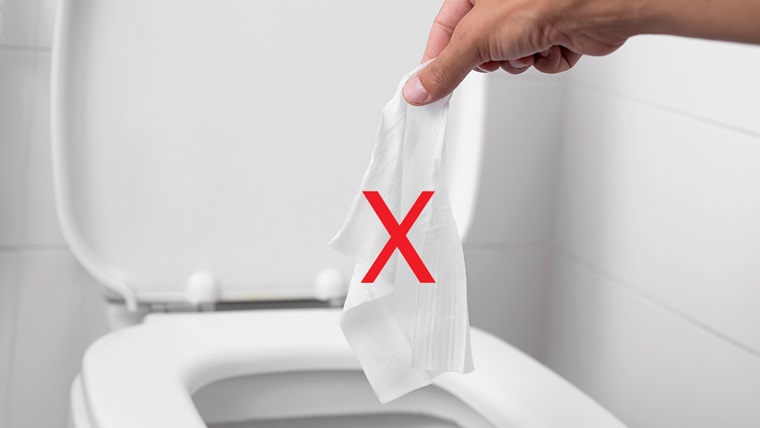
what happens if you flush paper towels down the toilet
In this comprehensive guide, we’ll dive into the reasons why flushing paper towels down the toilet is a bad idea, and we’ll provide practical advice on how to avoid plumbing nightmares. You’ll learn about the damage to pipes, environmental concerns, and tips for maintaining a clog-free toilet.
What Happens If You Flush Paper Towels Down The Toilet? Will one paper towel clog a toilet?
The design and material composition of paper towels make them significantly different from toilet paper. Unlike toilet paper, paper towels are engineered to be durable and absorbent, intended for cleaning up spills and messes without falling apart.
How to Prevent a Toilet from Clogging
Understanding the potential consequences of flushing paper towels down the toilet is the first step towards maintaining a healthy plumbing system. Let’s look at preventative measures to keep your toilet functioning properly.
Use the Right Toilet Paper
The first step in preventing clogs is to use the right type of toilet paper. Stick to toilet paper that is labeled as “septic-safe” or “biodegradable.” These types of toilet paper are designed to break down easily in water and are less likely to cause clogs. Look for brands that have been tested for disintegration speed and are known for their compatibility with plumbing systems.
Avoid using thick, ultra-soft toilet paper, as it can also be difficult to break down and may contribute to clogs. Additionally, avoid using paper towels or facial tissues as a substitute for toilet paper. It’s important to educate all household members, including children, about the importance of using only toilet paper in the toilet.
Anmay Paper toilet tissue is made from flushable paper raw material.
Flush Frequently
One of the main causes of clogs is flushing too much waste at once. To prevent this, flush frequently. After using the toilet, flush and then repeat until all waste is eliminated. This will prevent a large amount of waste from building up and causing a clog. Teaching everyone to flush after each use, rather than waiting for waste to accumulate, is key to preventing clogs.
Don’t Flush Non-Flushable Items
It’s important to remember that not everything can be flushed down the toilet. Items like paper towels, facial tissues, feminine hygiene products, and wipes should never be flushed. These items do not break down easily and can cause serious clogs in your plumbing system. A good practice is to keep a small trash bin next to the toilet for the disposal of these items.
Install a Toilet Paper Holder
If you frequently run out of toilet paper and are tempted to use paper towels as a substitute, consider installing a toilet paper holder in your bathroom. This will ensure that you always have a supply of toilet paper on hand and will prevent the need to use non-flushable items. A holder that accommodates multiple rolls or a storage unit for extra rolls can help avoid any temptation to use inappropriate substitutes.
What to Put in the Toilet to Keep it from Clogging
Keeping a toilet running smoothly goes beyond just avoiding flushing the wrong items. There are proactive measures you can take to maintain a clear and functional toilet.
Enzyme Cleaners
Enzyme cleaners are a safe and effective way to keep your toilet from clogging. These cleaners contain natural enzymes that break down waste and help to prevent clogs. They are also safe for your plumbing and septic system. Unlike harsh chemical cleaners, enzyme-based products work by catalyzing the breakdown of organic materials without damaging pipes.
Simply pour the recommended amount of enzyme cleaner into your toilet and let it sit for a few minutes before flushing. Regular use of enzyme cleaners can help to keep your toilet clog-free. They are particularly useful in households with a history of plumbing issues or those with older plumbing systems.
Baking Soda and Vinegar
Baking soda and vinegar are two household items that can help to prevent clogs in your toilet. Baking soda is a natural deodorizer and cleaner, while vinegar is a natural disinfectant and can help to break down waste. This combination can provide a gentle cleaning action that helps maintain pipe health without resorting to corrosive chemicals.
To use this method, pour a cup of baking soda into your toilet and let it sit for a few minutes. Then, pour a cup of vinegar into the toilet and let it sit for another 5-10 minutes. Finally, flush the toilet to clear out any remaining waste. The effervescence created by the reaction can help dislodge minor clogs and refresh your toilet bowl.
Plunger
A plunger is a must-have tool for any household. It can be used to remove clogs from your toilet and keep it running smoothly. To use a plunger, place the rubber end over the hole in the bottom of your toilet and push down and up repeatedly to create suction. This will help to dislodge any clogs and allow them to flow through the pipes. Be sure to have a good quality plunger with a flange design to create a better seal in the toilet bowl.
Plumbing Snake
For more stubborn clogs, a plumbing snake may be necessary. This tool is used to break up and remove clogs that are deeper in your pipes. To use a plumbing snake, insert the end with the corkscrew-like tip into the toilet and push it down until you feel resistance. Then, twist and push the snake to break up the clog. Finally, flush the toilet to clear out any remaining waste. It’s a more manual approach but can be highly effective in dealing with tough clogs.
In Summary
Flushing paper towels down the toilet can cause serious damage to your plumbing system and lead to costly repairs. To prevent clogs, use the right type of toilet paper, flush frequently, and avoid flushing non-flushable items. If you do experience a clog, try using enzyme cleaners, baking soda and vinegar, a plunger, or a plumbing snake to clear it out.
By following these tips, you can keep your toilet running smoothly and avoid the hassle and expense of dealing with clogs. Remember, when it comes to your toilet, it’s better to be safe than sorry. Regular maintenance and responsible usage are the keys to a worry-free bathroom experience.
